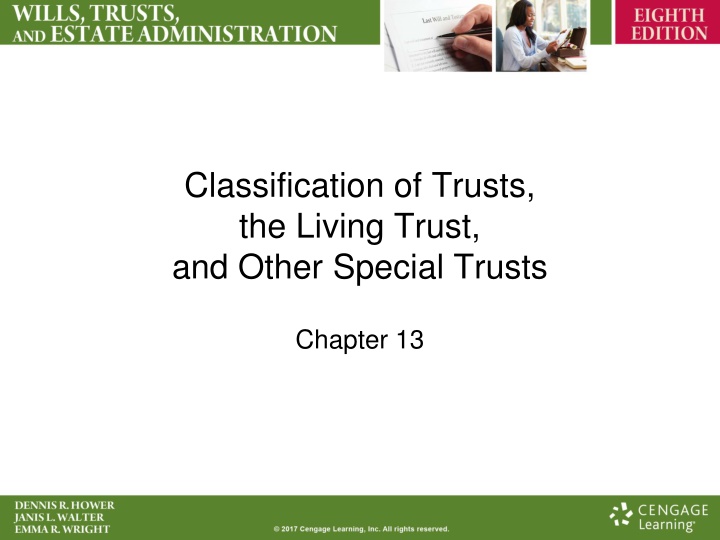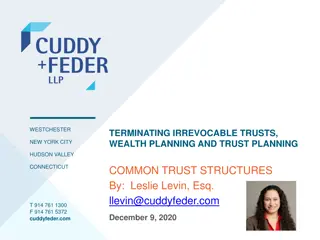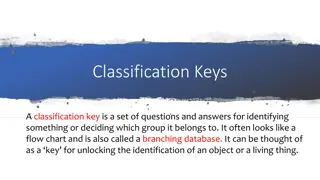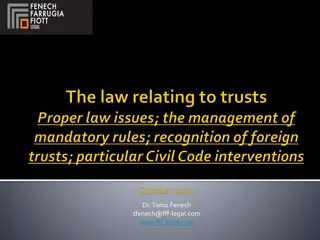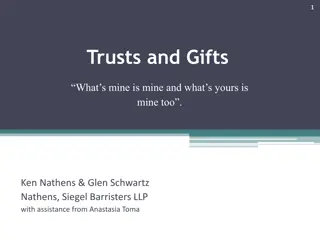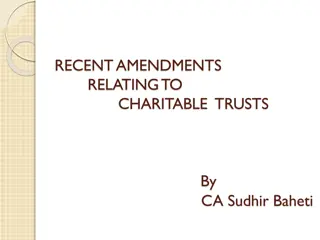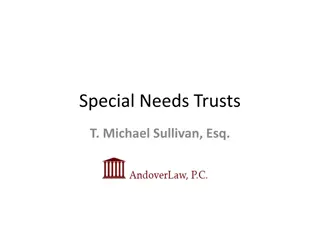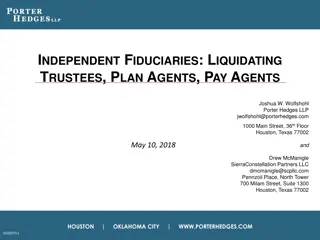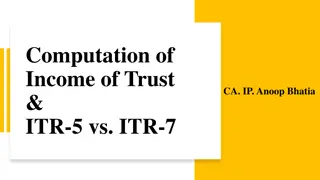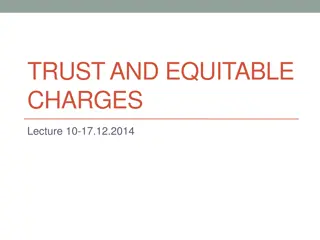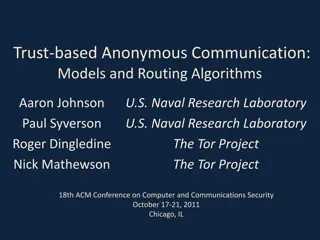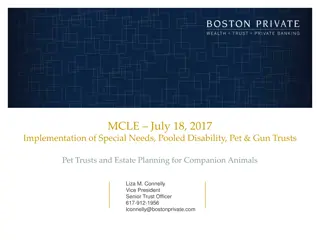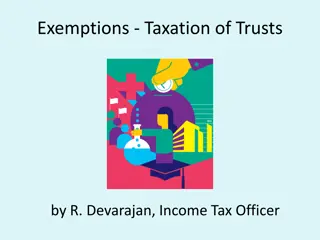An Overview of Trusts: Classification, Living Trust, and Special Trusts
This comprehensive guide delves into the classification of trusts, including express and implied trusts, active versus passive trusts, cy-près doctrine, inter vivos trust, testamentary trust, and the rule against perpetuities. Explore the nuances and characteristics of each trust type and gain insights into their unique purposes and legal implications.
Download Presentation

Please find below an Image/Link to download the presentation.
The content on the website is provided AS IS for your information and personal use only. It may not be sold, licensed, or shared on other websites without obtaining consent from the author.If you encounter any issues during the download, it is possible that the publisher has removed the file from their server.
You are allowed to download the files provided on this website for personal or commercial use, subject to the condition that they are used lawfully. All files are the property of their respective owners.
The content on the website is provided AS IS for your information and personal use only. It may not be sold, licensed, or shared on other websites without obtaining consent from the author.
E N D
Presentation Transcript
Classification of Trusts, the Living Trust, and Other Special Trusts Chapter 13
Trusts Express Trust Created in explicit terms for an express purpose Implied Trust Created by operation of law based on implied intent
Express Trusts Private Settlor intends to create a trust Trustee is named Beneficiary is named Transfer of property Public Same elements as a private trust, except that a social benefit or charitable purpose is set forth and there is an indefinite class of beneficiaries
Cy-pres Doctrine An equity court may order a gift intended for a charity that is now nonexistent to be given to another charity whose purpose is as near as possible to the purpose of the original charity named by the settlor
Active Versus Passive Trusts Active The trustee actively manages the trust Passive The trustee has no active duties
Inter Vivos Trust Created during the life of the settlor Can be public or private
Testamentary Trust Created at the time of the settlor s death or becomes effective upon execution of the settlor s will
Rule Against Perpetuities Fixes a period within which a future interest must vest Rule: No interest is valid unless it vests no later than 21 years, plus the gestation period, after some life or lives in being at the time of the creation of the interest
Implied Trusts Resulting Created by operation of law from circumstances implied from the intentions of the parties Can be a remedy to litigation Constructive An involuntary trust created by operation of law to recover property from a person who obtained possession or legal rights illegally or improperly
Miscellaneous Trusts Spendthrift Created for beneficiaries who are financially irresponsible Totten A payable-on-death savings account in a bank in which money is deposited in the depositor's name as trustee for another person named as beneficiary
Miscellaneous Trusts Sprinkling The trustee has authority and discretion to accumulate or distribute income or principal, or both, among beneficiaries in varying amounts
Revocable Living Trusts Same conditions apply as for trusts in general Can be an advantage over a will and can be considered a will substitute since they avoid probate Reduces costs of estate administration
Revocable Living Trusts Avoids publicity No court supervision Tax savings Allows the settlor to manage or dictate assets and distributions after death
Disadvantages of Living Trusts They are costly to create The settlor must transfer assets to the trust and give up control of them during his/her life
Pour-Over Will A will provision in which the testator directs the residue of the estate to go to an existing living trust
Irrevocable Trusts Cannot be changed or the property returned after they have been created Terms may be changed during the settlor s life, but the trust continues
Trust Administration Duties Pre-Death Manage trust property Preserve and maintain trust property File tax returns
Trust Administration Duties Post-Death Obtain Federal Employer Identification Number Notice to beneficiaries Open a checking account for the trust Transfer funds
Trust Administration Duties Post-Death Collect, preserve, and value assets Pay creditor claims File tax returns Distribute income or principal to beneficiaries
